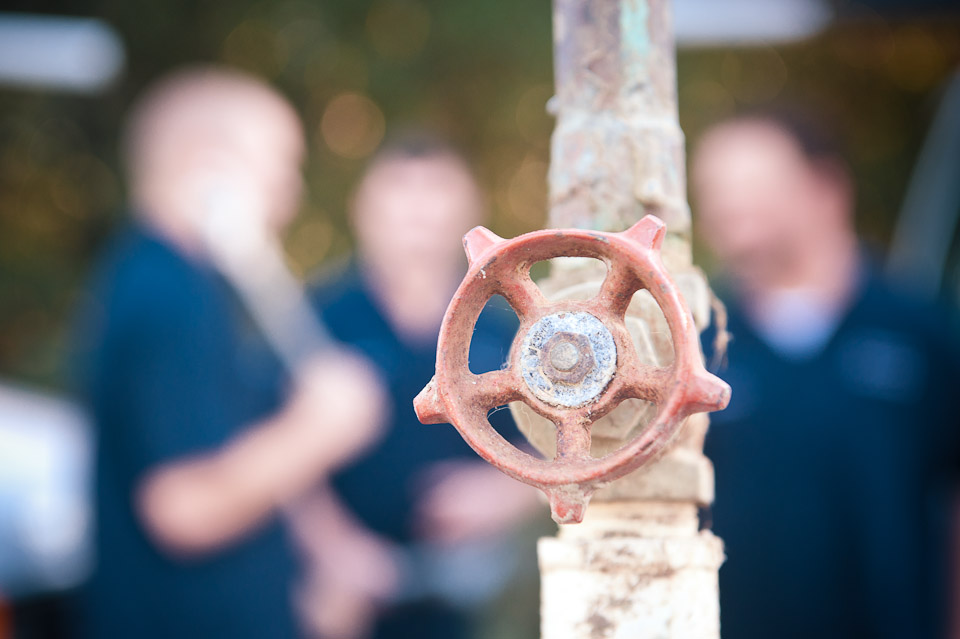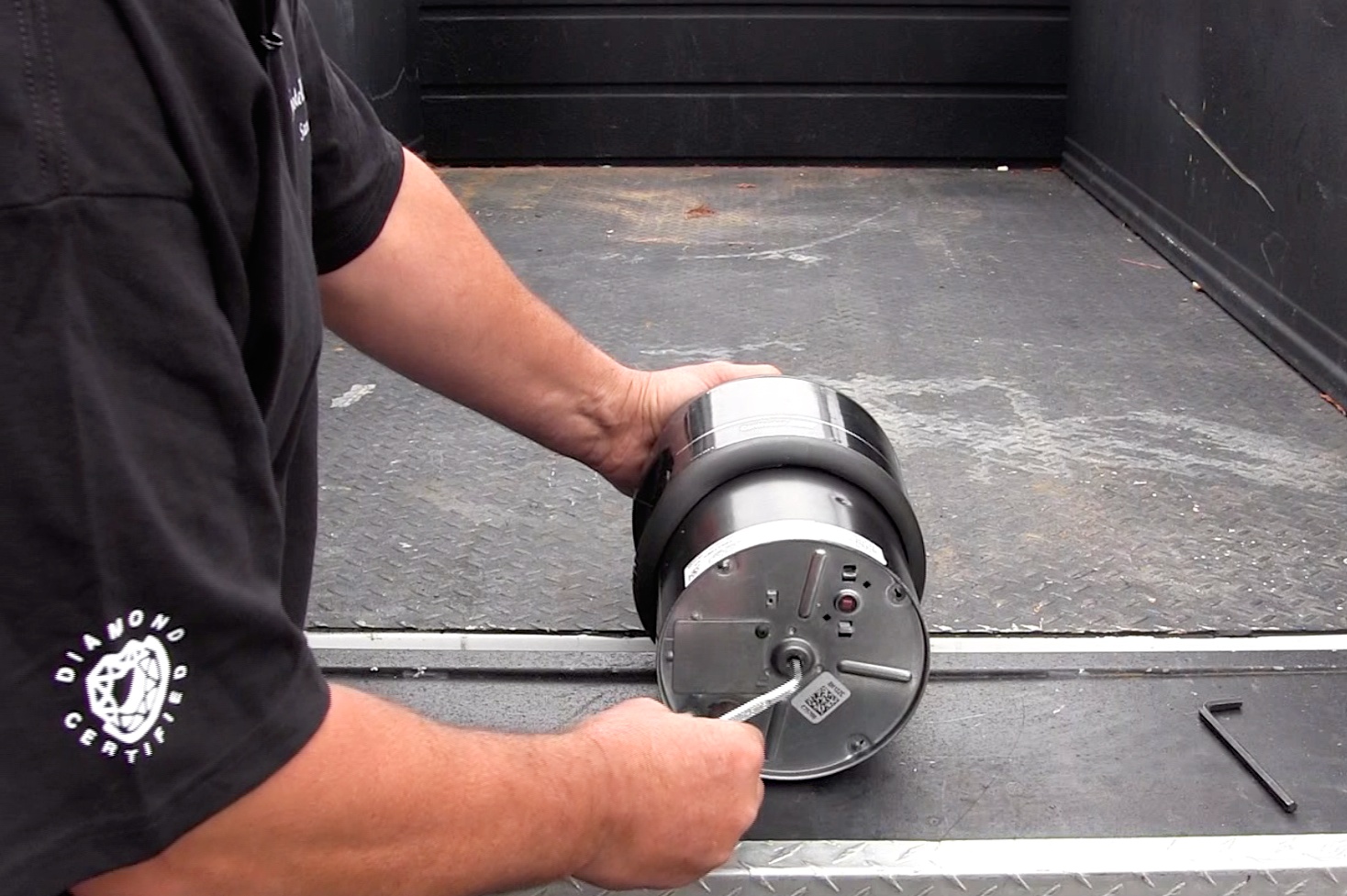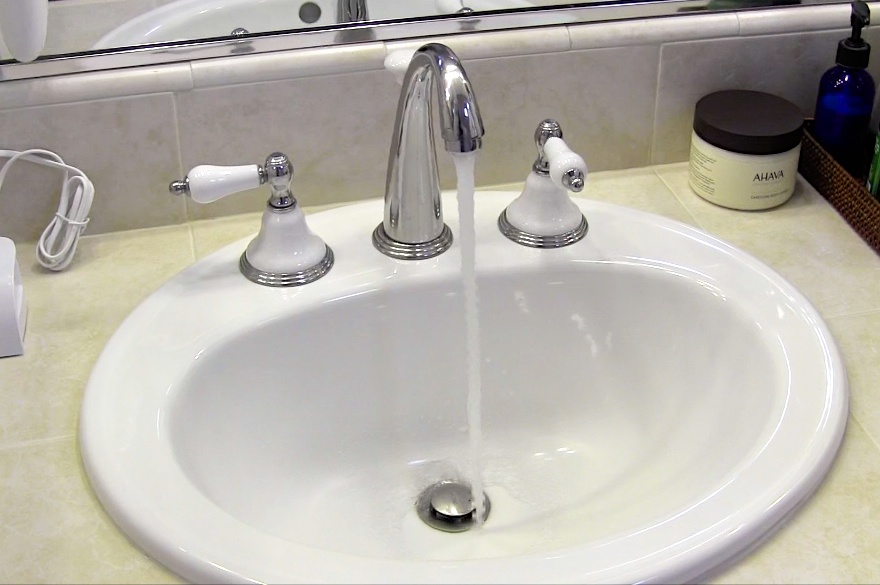
Whether you have a plumbing problem or want to perform preventative maintenance, it’s helpful to familiarize yourself with industry basics. Photo: Roman’s Plumbing (2015)
Like many industries, plumbing is extremely complex and continues to become more so with ongoing technological innovations. This article contains some useful information to help you get more acquainted with the trade, including key terms, DIY tips and answers to frequently asked questions.
Key Terms
Aerator: A device added to the open end of a faucet that mixes air with water to create a more even flow. Inexpensive to install, faucet aerators can help conserve water without diminishing water pressure.
Fittings: Fittings usually refer to faucets, shower valves and tub fillers, although they may also refer to piping coupling such as elbow and tee fittings.
GPM: Gallons per minute (GPM) is the rate of water flow from faucets and shower heads. GPM is regulated by the federal government, with the maximum flow rate for new showerheads and faucet aerators currently set at 2.5 GPM, although there are new aerators that operate at as little as 0.5 GPM. Installing low-flow fixtures can result in a water savings of 25 to 60 percent without a noticeable change in water pressure.
GPF: Gallons per flush (GPF) is the amount of water a toilet uses per flush, or the rate of water flow by which toilets and flush valves are measured and regulated. In the past, toilets averaged 3.5 GPF, but current law requires a maximum of 1.6 GPF for new models.
Rough-in: The rough-in is the initial part of a plumbing installation that lays out all the basic plumbing lines without permanently connecting them. This generally includes the water supply lines, water drains, water waste and vent lines that run to each fixture (toilet, sink, shower, etc.). Roughing in is typically done before the plumbing inspection.

In most cases, a jammed garbage disposal can be fixed without the need for professional assistance. Photo: Gotelli Plumbing Company (2015)
DIY Fixes and Maintenance
When a plumbing problem strikes or maintenance is needed, you don’t always need to call a professional—there are many things you can do yourself. Here are a few:
Unjam a garbage disposal
Garbage disposals come with tools that are specifically designed to unblock jams. They’re usually located in a small compartment beneath the unit, but if you can’t find them, a quarter-inch Allen wrench will serve the same purpose. After unplugging the unit’s power cord, insert your tool into the center slot on the unit’s underside and begin turning it back and forth. This will turn the disposal’s grinding unit and help unjam whatever is caught in the teeth. After removing your tool, restore power to the device, run the faucet and turn on the disposal. If your disposal doesn’t turn on, its automatic shut-off may have been triggered, in which case you can just press the reset button (also on the unit’s underside).
Clear a drain
In most cases, a clogged sink or shower drain is caused by a buildup of hair and grime. A simple yet effective tool for removing this kind of blockage is a 14-gauge wire. After cutting the tip of the wire, fray the strands and bend them backward to create a series of hooks to catch the hair. Next, stick the wire down the drain and turn it several times to get the hair and grime thoroughly entangled. Once you’ve removed the bulk of the buildup, run some hot water to flush down the remaining bits.
Drain and flush a water heater
An important part of maintaining a water heater is draining and flushing it of sediment buildup, which should be performed on an annual basis. Follow these steps:
- Shut off the electricity or gas to the unit, depending on what it’s powered by.
- Attach a hose to the drain valve at the bottom of the tank and turn off the cold water supply.
- Turn on the hot water at a sink or tub in your house. This will prevent a vacuum from forming in the water lines.
- Open the drain valve to drain the tank. Make sure to run your hose outside, and remember, the water will be hot.
- Once the water has fully drained from the tank, turn the cold water supply back on to flush the tank of sediment. Once the water starts running clear out of your hose, turn off the drain valve (as well as your indoor faucet).

Installing low-flow faucet aerators and other fixtures can substantially reduce your home’s overall water usage. Photo: American Ratings Corporation (2015)
Frequently Asked Questions
Q: Can I use a drain cleaner like Liquid-Plumr if my drains are running slow?
A: When it comes to store-bought drain cleaning products, one important factor to consider is frequency of use. Using Liquid-Plumr for a one-time clog probably won’t hurt, but if it becomes a recurrent problem, continually pouring chemicals down your drain may start to have a detrimental effect on your piping. In this case, you should contact a professional about a more permanent solution.
Q: Should I avoid putting certain things down my garbage disposal?
A: A garbage disposal may seem like a “catch-all” for organic refuse, but there are several things that should never be put into it. For example, items like chicken bones and large pits from avocados and peaches can damage the device’s blades, and rice and pasta can cause clogs due to water expansion. Stringy vegetables, potato peelings, egg shells and coffee grounds can also cause problems by wrapping around the blades or getting caught in the trap. To avoid these situations, consider composting organic items instead.
Q: What are the benefits of an on-demand water heater?
A: On-demand water heaters (also called tankless water heaters) provide both functional and financial benefits. First, they provide immediate hot water to the point of use rather than heating and storing hot water in a tank. Second, since they don’t waste energy by storing and maintaining the temperature of unneeded hot water, their operating costs can be up to 30 percent lower than conventional models. Furthermore, consumers who purchase on-demand water heaters are often eligible for tax credits.
Q: Should I do anything to keep the plumbing and fixtures working in guest bathrooms and other infrequently used areas?
A: Seldom-used toilets, piping and fixtures should be periodically flushed with water, which will keep the water traps full and avoid the backflow of odors and gasses into your home. Additionally, it’s a good idea to regularly turn on faucets and hose spigots to keep them from freezing up due to prolonged dormancy.
To find a Diamond Certified company to help you with your plumbing needs, click here.
3 Responses
Leave a Reply
You must be logged in to post a comment.

Thanks for answering these questions. I’ve been finding myself asking what to do about the best way to maintain seldom-used bathrooms. It’s interesting to find out that I should be flushing them from time to time to make sure that the water traps don’t get full. I should start doing that because I’ve noticed a few odors coming from my guest bathrooms.
I really liked these frequently asked questions. I didn’t know that overusing drain chemicals could be harmful to my pipes. I might try to contact a professional when they consistently are clogged. These basics of what I needed to learn.
Thank you for answering so many of these questions. I had been wondering about the use of chemical drain cleaners, which is what brought me here in the first place, but all of these answers are great. They literally answered questions that I didn’t know I had, so thanks for sharing.